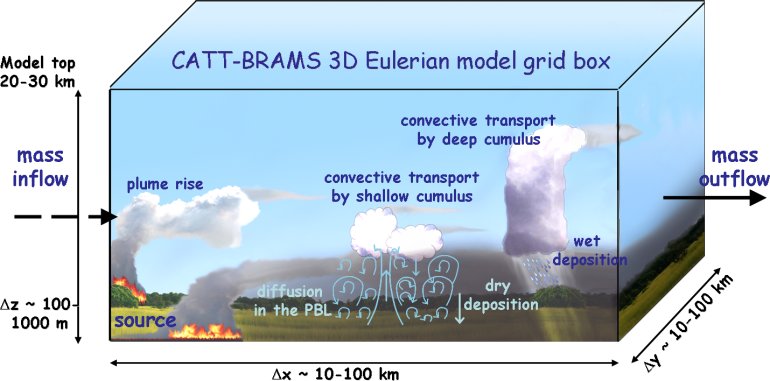The Air Quality forecast for South America is now available on the World Air Quality Index project, in parnership with the Brazilian Centro de Previsão do Tempo e Estudos Climáticos (CPTEC). The forecast can be accessed freely accessed from cptec.inpe.br as well as forecast/ south-america/.
The CPTEC team has done an excellent work at providing a simple and detailed explanation on the underlying concepts used by their forecast model, called BRAMS (for Brazilian developments on the Regional Atmospheric Modelling System). The picture below (from the CPTEC) is giving an insight on the workflow for their model (source -> transport -> deposition).

One of the minor issue with the system used by the CPTEC is the input sources which are only based on moderation of biomass burning and anthropogenic (human made) pollution. To be even more complete, it would further benefit from taking input data from global sources: for instance from the sahara dust (which indeed crosses the atlantic). So, just like the accuracy study we did not the Asian Air Quality forecast from Sprintars, you can find below the forecast accuracy analysis for BRAMS for 5 cities in South America.
Forecast advance:
